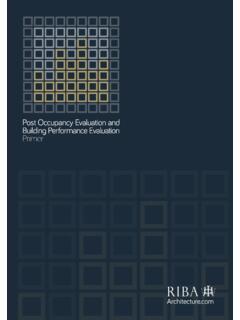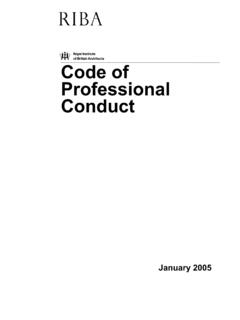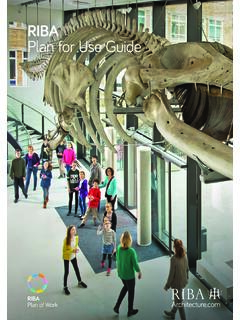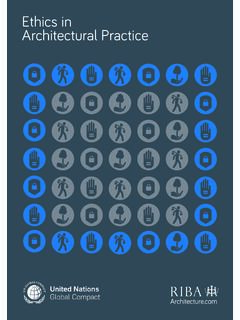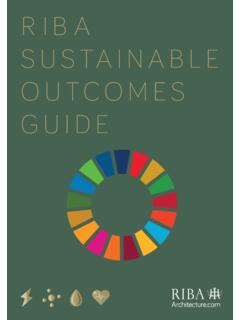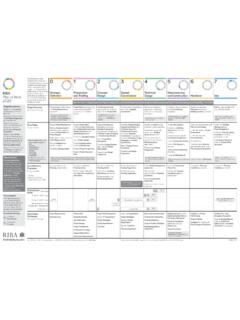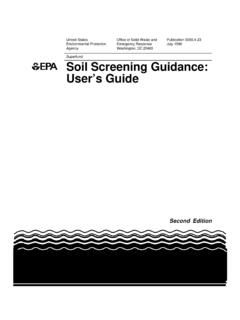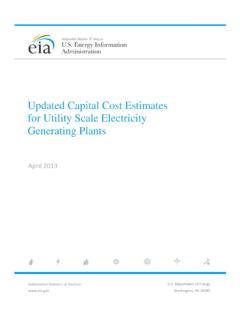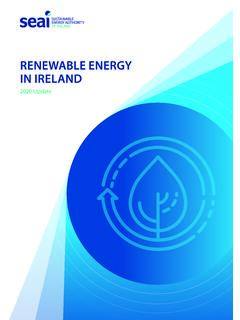Transcription of Embodied and whole life carbon assessment for architects
1 Embodied and whole life carbon assessment for architectsEmbodied and whole life carbon assessment for architects2 This paper introduces architects to carbon assessment in the built environment and its application through the RIBA work stages. It makes the case for architects role in reducing carbon emissions to mitigate climate change, explains the key concepts of Embodied and whole life carbon and recommends the use of the Royal Institution of Chartered Surveyors (RICS) methodology for undertaking detailed carbon assessments (RICS whole life carbon assessment for the built environment professional statement 2017). To date, this is the most comprehensive and consistent approach available to the industry. Cover image: Google, London HQ at Kings Cross, London (under construction) HayesDavidson. architects : BIG, Heatherwick Studio, BDP. carbon Consultant: Sturgis carbon Profiling.
2 Google have included whole life carbon as a key performance indicator. This included detailed elemental analysis as well as an overall carbon budget and : Simon Sturgis Editor: Gesine Kippenberg Chapter: Summary of RICS whole life carbon assessment for the built environment professional statement (2017) RICSP ublished by RIBA, 66 Portland Place, London, W1B every effort has been made to check the accuracy and quality of the information given in this publication, neither the Editor nor the Publisher accept any responsibility for the subsequent use of this information, for any errors or omissions that it may contain, or for any misunderstandings arising from and whole life carbon assessment for architects3 IntroductionThis paper introduces architects to carbon assessment in the built environment and its application through the RIBA work stages. It makes the case for architects role in reducing carbon emissions to mitigate climate change, explains the key concepts of Embodied and whole life carbon and recommends the use of the Royal Institution of Chartered Surveyors (RICS) methodology for undertaking detailed carbon assessments (RICS whole life carbon assessment for the built environment professional statement 2017).
3 To date, this is the most comprehensive and consistent approach available to the industry. Increasingly, clients in all sectors are commissioning WLC assessments as part of the project requirements. This is primarily driven by environmental considerations but also makes economic sense. Important benefits of WLC assessments include: a better understanding of the sourcing and processing of materials and products; an understanding of long term post completion considerations such as maintenance, durability and lifespan; and making plain the carbon value of retaining existing built fabric. Undertaking WLC assessments is recommended for all architects who wish to understand and minimise the carbon emissions associated with their designs over the entire life cycle of the building. The knowledge gained from WLC assessments further enables architects to take the lead in sustainable design and construction.
4 architects intending to undertake WLC assessments should also refer to the full RICS professional statement (RICS PS).21 Moorfields, London. architect : Wilkinson Eyre. carbon Consultant: Sturgis carbon Profiling. This project by developer Landsec for occupier Deutsche Bank has included detailed whole life carbon assessments of design, supply chain and and whole life carbon assessment for architects4 carbon emissions and the built environmentClimate change in the 21st Century is projected to have severe detrimental consequences for the environment and societies world-wide. Caused by man-made greenhouse gas emissions, also referred to as carbon emissions, the challenge of today is to prevent further escalating temperatures. The Paris Agreement aims to limit global warming to well below 2 C with efforts made to limit it to C. This goal will only be achieved if carbon emissions in the built environment are reduced dramatically.
5 According to the Green Construction Board, the sector currently generates some 35-40% of the total carbon emissions in the UK. The following definitions of Scope 1, 2 and 3 emissions are taken from UK government s Guidance on how to measure and report your greenhouse gas emissions. Under construction. Dalston Lane, London: architects : Waugh Thistleton. carbon consultants: Ramboll. Image Daniel project is a combination of a low carbon CLT structural frame, combined with a long life brick skin. Brick is a high carbon cost material to produce, however this is outweighed by extreme durability. A good example of a long life and low carbon and whole life carbon assessment for architects5 After completion. Dalston Lane, London: architects : Waugh Thistleton. carbon Consultants: Ramboll. Scope 1 (Direct emissions) Activities owned or controlled by your organisation that release emissions straight into the atmosphere.
6 These are direct emissions. Examples of scope 1 emissions include emissions from combustion in owned or controlled boilers, furnaces, or vehicles. Scope 2 (Energy indirect) Emissions being released into the atmosphere associated with your consumption of purchased electricity, heat, steam and cooling. These are indirect emissions that are a consequence of your organisation s activities but which occur at sources you do not own or control. Scope 3 (Other indirect) Emissions that are a consequence of your actions, which occur at sources which you do not own or control and which are not classed as scope 2 emissions. Examples of scope 3 emissions are business travel by means not owned or controlled by your organisation, waste disposal, or purchased materials. Embodied and whole life carbon assessment for architects6 Embodied carbon emissionsEmbodied carbon emissions are included within scope 3, in that construction materials specified by architects are produced by other parties and would be counted as their scope 1 or 2 emissions.
7 whole life carbon in relation to a building covers scope 1, 2 and 3 emissions. carbon emissions in the built environment are therefore attributable to both the energy use of built assets (operational emissions) and to their construction and maintenance ( Embodied emissions). The construction process, including the sourcing of materials and their conversion into products, systems and buildings as well as transport and site works is a significant source of Embodied carbon emissions. Post practical completion (PC), further materials are consumed through maintenance and replacement over a building s life (typically taken as 60 years). Collectively, these emissions can exceed those from day to day operational energy use. They can also be cheaper, often cost neutral, to life carbon approachTo get a true picture of a building s energy and carbon emissions impact it is necessary to understand not only the operational and the Embodied emissions on their own, but also the interrelationship between them.
8 whole life carbon (WLC) thinking therefore means considering these emissions together so as to optimise their relative and combined impacts and avoid the unintended consequences of assessing each in isolation. In summary, a low carbon building is one that optimises the use of resources both to build it and to use it over its charts illustrating indicative relationships between operational and Embodied carbon emissions for three building typologies. The whole life figures have been calculated in line with the modular structure (modules A-C) of BSEN15978 as detailed in RICS PS., over a 60 years life cycle. Operational and Embodied emissions are as estimated at design stage. Grid decarbonisation applied to emissions due to electricity consumption over the life of the building in accordance with the slow progression scenario in National Grid Future Energy Scenarios 2015.
9 Diagrams: Sturgis carbon Profiling/ life operational carbon emissionsSpeculative office building with Cat A fit out, central London, UKTypical warehouse shed with office space (15% by area), London perimeter, UKResidential block with basic internal fit out, Oxford, UKWhole life operational carbon emissionsWhole life operational carbon emissionsWhole life Embodied carbon emissionsWhole life Embodied carbon emissionsWhole life Embodied carbon emissionsOffice35%47%29%51%18%24%7%11%13 %32%15%18%WarehouseResidentialEmbodied emissions to practical CompletionEmbodied emissions over life cycleOperational emissions regulatedOperational emissions unregulatedEmbodied and whole life carbon assessment for architects7 Standards for whole life carbon assessment The British Standard BS EN 15978:2011 sets out the overall principles of Embodied and whole life carbon measurement in the built environment.
10 BS EN 15978 covers the assessment of the environmental performance of buildings, while the associated BS EN 15804 covers the environmental performance of individual products. Ideally these two standards should be read together. Other relevant standards are: PAS 2050, PAS 2080 and the ISO 14000 series. BS EN 15978, however, is open to interpretation and does not provide detailed practical guidance on how to assess carbon emissions. This leads to a lack of reliability and comparability. To address this issue, the RICS published a professional statement (the highest form of RICS guidance, both mandatory and regulated by the RICS, called whole life carbon assessment for the built environment professional statement (RICS PS) in November 2017. The purpose of RICS PS is to bring consistency to carbon reporting. It is the recommended methodology to use for undertaking carbon assessments.)
